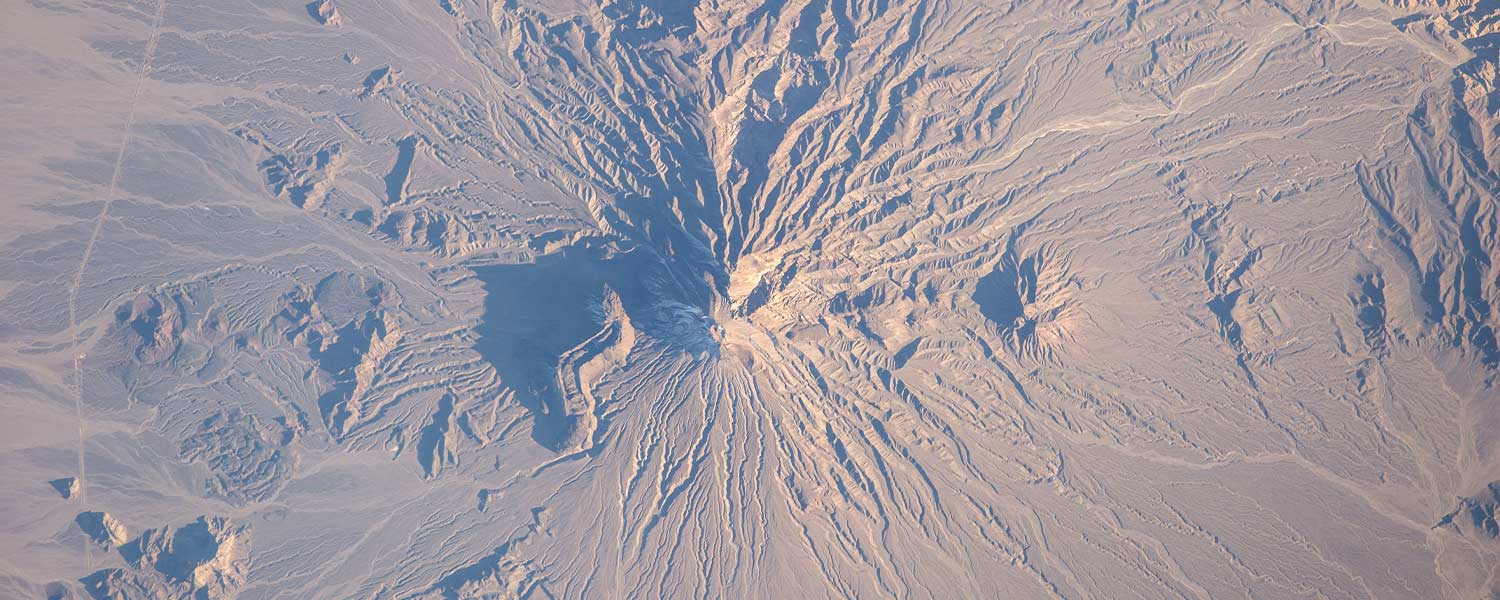
Bazman volcano
Bazman volcano
Bazman mountain or Khezr Bazman mountain in Sistan and Baluchestan province is located at 30 km northwest of Bazman district and at a distance of 200 km from Bam city. Bazman is one of the Iran’s volcanos and the second highest peak of this province after Taftan.
Although the date of the eruption the peak is unknown, the mountain erupted in several stages (first 4.6 million years ago and the last eruption 41,000 years ago) and until today, the peaks of this volcano are full of dioxide fumes.
This mountain is located in the north of Hamun-e Jaz Murian Lake with an altitude of 3,497 meters above sea level and separates Lut desert from Jaz Murian. The Bazman mountain extends from the west to the Barez mountain (Jebal Barez) range in Kerman province. This peak has a glacier that the people of Bazman used to use for their needs in ancient times, and on the southern slope of Khezr Mountain there is a famous place called the shrine of Khezr Nabi (one of the prophets), that the people of Bazman visit that and pray there.
Flora and fauna of Bazman Peak
Bazman protected area is one of the beautiful and original mountainous areas with an area of 300,000 hectares on the outskirts of Bazman city and 100 km from Iranshahr. Animals such as Leopards, Goats and Otters, Rock otters, Rams and Sheep, Tibetan foxes, Wolves, Jackals, Rabbits, Partridges, Terns and Roosters also live in this area.
Among the pristine and untouched attractions and landscapes of this region, the unique vegetation is Turmeric, Coriander, Almond and various plants.
So far, more than 70 species of herbs have been identified in Iranshahr city. Most of these species are grow spontaneously in the mountainous and desert areas, some of them are Anise, Tea, Aloe vera, Almond and Wild olive.
The best season to climb the peak
In the middle of winter, while the snow has covered the mountains of Alborz and Zagros in white, is the best season to climb Bazman. Winter climbing of the peak is very simple if there is favorable weather. IMT suggests that you use local guides to climb the peak.